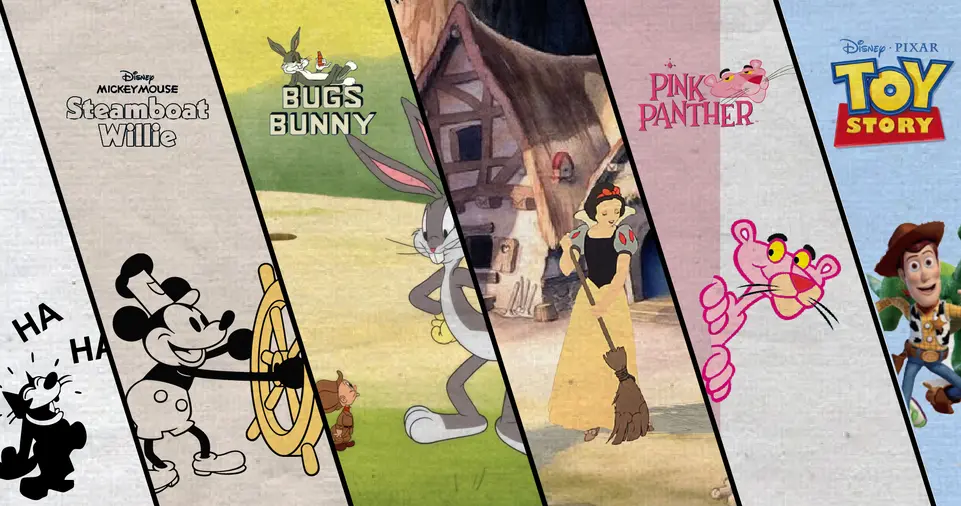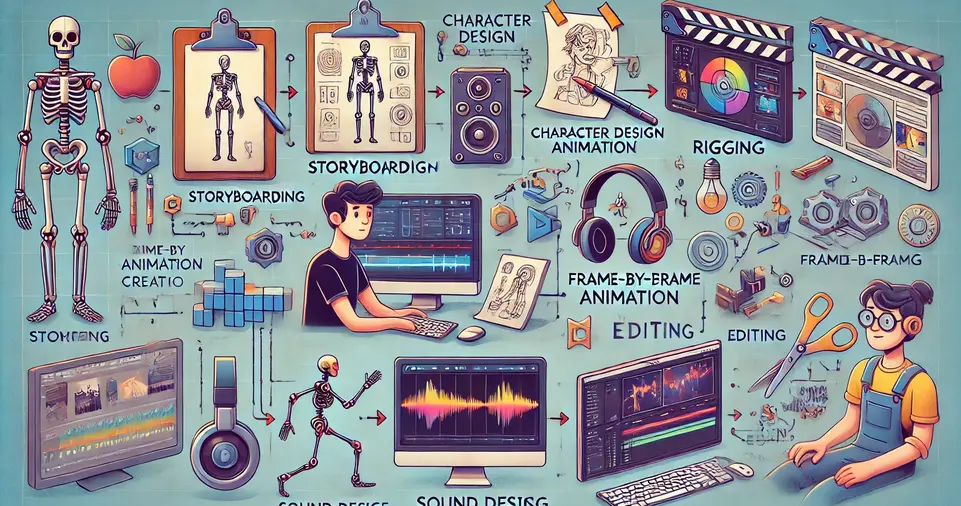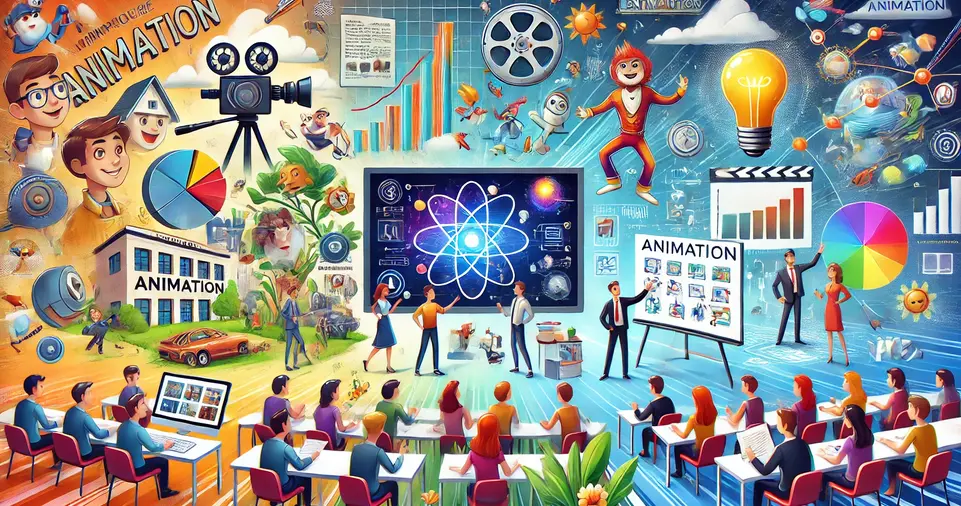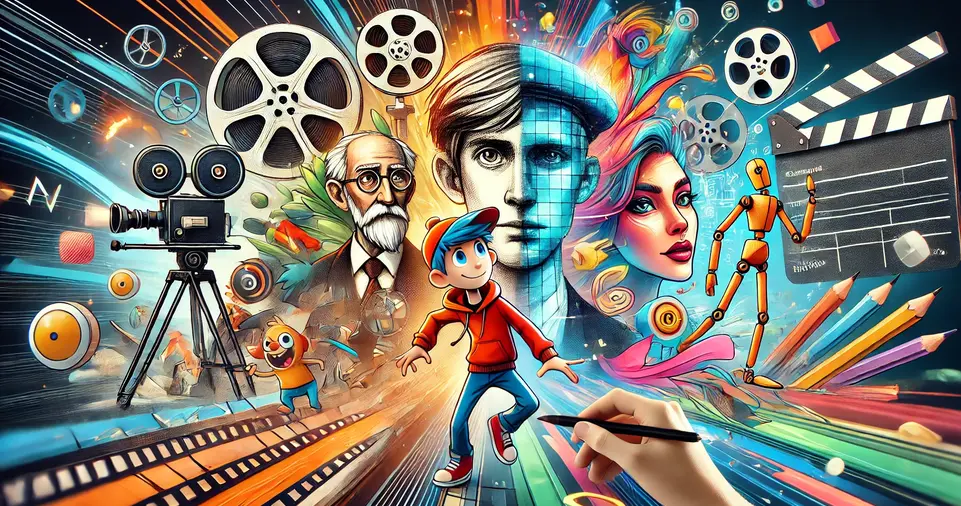Animation is the art of bringing static images to life by creating the illusion of movement.
From captivating movies to impactful advertisements and educational tools, Animation is a cornerstone of modern communication and entertainment.
This article explores what Animation is, its types, the process behind its creation, and its growing significance across industries.
Whether you’re curious about its history, techniques, or the innovations shaping its future, this guide offers a comprehensive understanding of the fascinating world of Animation.
What is Animation?
Animation is the process of creating the illusion of movement by displaying a series of still images or frames in rapid succession. These frames, each slightly different, combine to simulate motion.
A Simple Definition of Animation
Animation is the art of giving life to inanimate objects or drawings through sequential motion.
Whether it’s hand-drawn, computer-generated, or created using physical objects, Animation is a powerful tool for communication and entertainment.
The Historical Evolution of Animation

Animation is as old as humanity’s desire to tell stories visually. Here’s a look at its fascinating journey:
Prehistoric Beginnings
- Ancient cave paintings often depicted sequential drawings of animals or humans, likely to convey movement or narratives. These primitive visual stories laid the foundation for modern Animation.
Early Devices
The 19th century marked a turning point with inventions that mimicked Animation:
- Zoetrope (1834): A spinning cylinder with sequential images inside created the illusion of motion when viewed through slits.
- Flipbooks (1868): A series of drawings flipped rapidly to simulate movement.
- Kinetoscope (1891): Developed by Thomas Edison, it displayed short moving picture sequences to individual viewers.
The Cinematograph Era
The Lumière brothers introduced the Cinématographe, a device that allowed motion pictures to be projected to a larger audience.
This innovation transformed Animation from small experiments into a mainstream entertainment medium.
The Golden Age of Animation
The early 20th century saw iconic breakthroughs:
- Walt Disney’s Steamboat Willie (1928) introduced synchronized sound.
- Full-length films like Snow White and the Seven Dwarfs (1937) demonstrated Animation’s potential for storytelling.
Modern-Day Advancements
From CGI masterpieces like Toy Story (1995) to the integration of virtual reality, Animation continues to evolve, pushing the boundaries of creativity and technology.
How Animation is Created

Creating Animation involves meticulous planning and execution. Here’s a step-by-step guide:
| Step | Description |
|---|---|
| 1. Concept & Story | Developing the idea and narrative for the Animation. |
| 2. Storyboarding | Visualizing scenes in a comic book-like format. |
| 3. Character Design | Crafting unique appearances and personalities for characters. |
| 4. Backgrounds | Designing the settings and environments where the story takes place. |
| 5. Animation Software | Using tools like Adobe Animate or Blender to bring designs to life. |
| 6. Rigging | Creating a digital skeleton for 3D characters to enable realistic motion. |
| 7. Frame-by-Frame | Generating frames that simulate movement. |
| 8. Sound Design | Adding music, dialogue, and sound effects to enhance the experience. |
| 9. Editing | Combining visuals and audio for seamless storytelling. |
| 10. Exporting | Finalizing the Animation for distribution across various platforms. |
Types of Animation
Traditional Animation
- Definition: Hand-drawn frames on transparent sheets layered and photographed in sequence.
- Famous Examples: Disney’s The Little Mermaid, Studio Ghibli’s Spirited Away.
- Strengths: A timeless charm and rich detail.
- Challenges: Labor-intensive and time-consuming.
2D Animation
- Definition: A digital evolution of traditional Animation, where characters and objects are animated in a flat, two-dimensional space.
- Famous Examples: The Simpsons, Avatar: The Last Airbender.
- Strengths: Cost-effective and widely used in TV and web series.
- Tools: Adobe Animate, Toon Boom Harmony.
3D Animation
- Definition: Creates lifelike characters and environments in a three-dimensional space.
- Famous Examples: Frozen, Toy Story.
- Strengths: Realistic visuals and immersive storytelling.
- Tools: Maya, Blender, Cinema 4D.
Stop Motion Animation
- Definition: Physical objects are moved incrementally and photographed frame by frame.
- Famous Examples: The Nightmare Before Christmas, Kubo and the Two Strings.
- Strengths: A unique, handcrafted aesthetic.
- Challenges: Extremely time-intensive.
Motion Graphics
- Definition: Combines text and abstract visuals to explain complex ideas or convey information.
- Applications: Explainer videos, corporate presentations.
- Tools: After Effects, Motion.
Importance of Animation

Animation is a versatile medium with applications across various sectors:
| Field | Importance |
|---|---|
| Education | Simplifies complex topics, making learning engaging and memorable. |
| Entertainment | Captivates audiences with imaginative stories and visuals. |
| Communication | Enhances marketing and advertising through clear, visually appealing messaging. |
The Future of Animation
The future of Animation looks promising, with technologies like AI, machine learning, and AR/VR leading the way:
- AI-Driven Animation: Automates complex processes, accelerating production timelines and enhancing creativity.
- Realism with Ray Tracing: Creates hyper-realistic lighting and shadows for an immersive experience.
- Interactive Experiences: Blends Animation with AR/VR, allowing viewers to engage directly with animated worlds.
These innovations are expanding Animation’s potential beyond entertainment, impacting fields like healthcare, education, and architecture.
Frequently Asked Questions (FAQs)
What is Animation in simple terms?
Animation is the art of creating moving visuals by displaying a series of images in quick succession.
Why is Animation important?
It simplifies communication, enhances storytelling, and engages audiences in ways static visuals cannot.
Can I learn Animation without a degree?
Yes, many self-taught animators build successful careers with online courses and practice.
ALSO READ: How to Choose Your First Programming Language: A Comprehensive Guide
Conclusion
Animation has come a long way from cave drawings to cutting-edge immersive realities.
Whether it’s entertaining audiences, educating learners, or communicating complex ideas, Animation continues to inspire and innovate.
Unlock your potential with our comprehensive Animation and Design Training courses—start your journey today and bring your creative visions to life!

